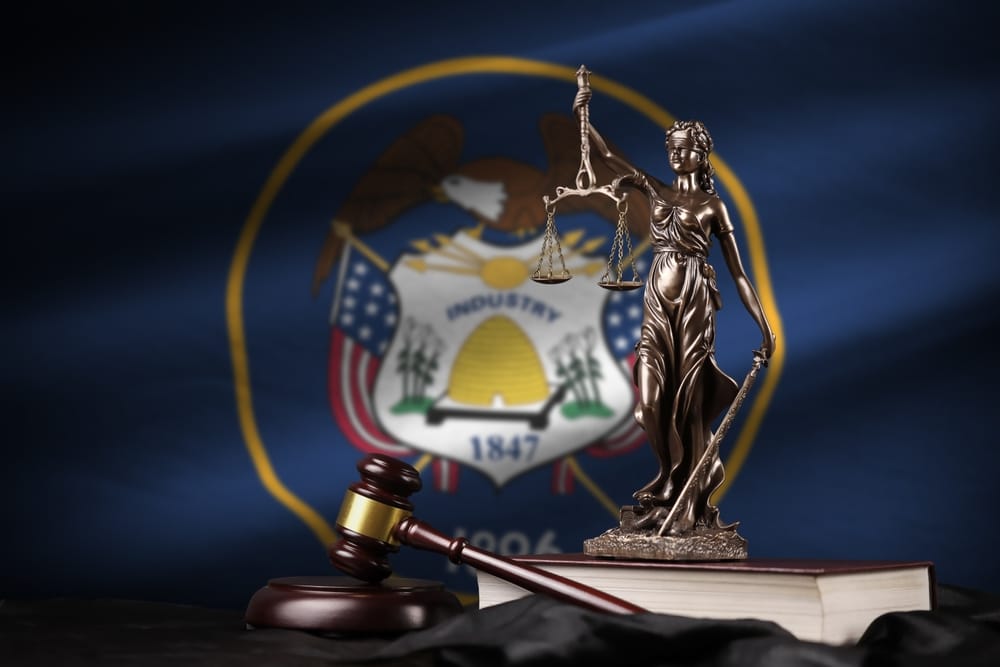Utah Bankruptcy Guide

Introduction
Navigating bankruptcy in Utah requires understanding both federal bankruptcy laws and state-specific requirements that can significantly impact your case. Utah’s unique geography, from its urban corridors to remote mountain regions, along with its distinctive economic features like mining rights and seasonal property considerations, creates special circumstances that must be carefully considered in bankruptcy proceedings.
The bankruptcy process in Utah operates through the United States Bankruptcy Court for the District of Utah, with its main courthouse in Salt Lake City and additional locations in St. George and Ogden. This federal court system works in conjunction with state laws, particularly regarding property exemptions and residency requirements, to provide debt relief while protecting essential assets.
Utah’s bankruptcy laws reflect the state’s diverse economic and geographic landscape, from protecting mining claims and water rights to addressing seasonal mountain property access. Understanding these unique aspects of Utah bankruptcy law can significantly impact the success of your bankruptcy filing and the protection of your assets.
Whether you’re considering Chapter 7 or Chapter 13 bankruptcy, Utah’s specific exemptions and requirements will play a crucial role in your case. This guide provides detailed information about state-specific considerations while helping you understand how Utah’s laws interact with federal bankruptcy regulations.
The decision to file bankruptcy should never be taken lightly, and understanding Utah’s specific requirements and protections is essential for making informed decisions about your financial future. This guide will help you navigate the complexities of bankruptcy in Utah while maximizing the protections available under state law.

State Bankruptcy Courts
District of Utah Structure
The United States Bankruptcy Court for the District of Utah serves as the primary venue for bankruptcy proceedings throughout the state. With its headquarters in Salt Lake City, the court maintains additional locations in St. George and Ogden to serve Utah’s diverse population centers.
The Salt Lake City headquarters, located in the Frank E. Moss United States Courthouse, handles the majority of bankruptcy filings and provides comprehensive services including filing assistance, document processing, and courtroom facilities for hearings and proceedings. The additional locations in St. George and Ogden offer increased accessibility for residents in other regions of the state.
The court’s website (www.utb.uscourts.gov) serves as a valuable resource for debtors, attorneys, and creditors, providing access to forms, local rules, filing procedures, and important announcements. Electronic filing capabilities through the CM/ECF system have streamlined the filing process, though proper training and authorization are required for electronic filing access.
Utah Property Exemptions
Homestead Exemption
Utah’s homestead exemption provides significant protection for primary residences, allowing individuals to protect up to $42,000 of equity in their homes, while married couples can protect up to $84,000. This protection extends to various forms of residences, including traditional homes, condominiums, and mobile homes.
The homestead exemption specifically includes protection for water rights associated with the property, recognizing the crucial importance of water access in Utah’s arid climate. This protection can be particularly valuable for properties in rural areas where water rights significantly impact property value and usability.
The exemption also provides specific considerations for mining claims, reflecting Utah’s rich mining history and ongoing mining activities. Property owners with mining claims must carefully document these rights and their relationship to the primary residence to ensure proper protection under the homestead exemption.
Personal Property Exemptions
Utah provides a comprehensive set of personal property exemptions designed to help individuals maintain basic living standards during and after bankruptcy. Vehicle exemptions allow protection of up to $3,000 in equity, helping many debtors retain their primary transportation.
The state offers generous protection for personal items, including full protection for clothing, up to $1,000 for books and photos, $4,000 for household goods, and $1,000 for jewelry. Health aids receive full protection, recognizing their essential nature for maintaining health and quality of life.
Utah’s unique provision for a 12-month supply of food and provisions reflects the state’s cultural and practical emphasis on emergency preparedness. Additionally, the protection of burial plots for family members demonstrates consideration for long-term family needs.
Wage Exemptions
Utah’s wage exemptions provide robust protection for working individuals, allowing them to retain the greater of 75% of their disposable earnings or 30 times the federal minimum wage. This protection ensures that debtors can maintain basic living standards while addressing their financial obligations.
Enhanced protections exist for heads of household, recognizing their additional family responsibilities. These provisions help ensure that families can maintain stability during the bankruptcy process and beyond.
Special considerations apply to mining income, reflecting the importance of the mining industry in Utah’s economy. These protections help ensure that individuals working in mining operations can maintain their livelihoods while addressing their debt obligations.
Tools of Trade
Utah offers significant protection for tools and equipment necessary for earning a living, allowing exemptions up to $5,000 for professional tools and equipment. This protection extends to professional libraries, mining equipment, business computers, and work-specific tools.
The tools of trade exemption recognizes the importance of maintaining earning capacity during and after bankruptcy. Special consideration is given to mining equipment, acknowledging the unique requirements and high costs associated with mining operations.
These protections help ensure that professionals and tradespeople can continue their work without interruption, supporting both individual recovery and broader economic stability.
Additional Exemptions
Retirement and Insurance Protection
Most retirement accounts receive comprehensive protection under Utah law, including 401(k)s, IRAs, and pension plans. This protection helps ensure long-term financial security while addressing current debt challenges.
Life insurance receives limited protection, with specific provisions governing both policy values and benefit payments. Understanding these limitations is crucial for proper bankruptcy planning.
Workers’ compensation, unemployment benefits, and veterans’ benefits receive full protection, ensuring that these crucial support systems remain available to those who need them.
Agricultural Considerations
Agricultural aid payments receive specific protection under Utah law, recognizing the importance of farming and ranching to the state’s economy. These protections help ensure the stability of agricultural operations during financial difficulties.
Special Utah Considerations
State-Specific Requirements
Utah requires completion of approved credit counseling from authorized providers before filing bankruptcy. This requirement helps ensure that debtors understand all available options and make informed decisions about bankruptcy.
Residency requirements must be met to utilize Utah exemptions, typically requiring domicile in the state for at least 730 days before filing. Special considerations apply to mountain property issues and mining rights protection, reflecting Utah’s unique geographic and economic characteristics.
Geographic Variations
Utah’s diverse geography creates unique considerations for bankruptcy proceedings. Mountain regions face issues of seasonal access and maintenance, while desert areas contend with water rights and access challenges.
The state’s urban corridors, primarily along the Wasatch Front, present different considerations than rural areas, particularly regarding property values and exemption applications.
Common Questions in Utah
Mountain Property Issues
Property in Utah’s mountain regions presents unique challenges, including seasonal access limitations, snow removal responsibilities, and maintenance requirements. These factors can significantly impact property values and bankruptcy considerations.
Water rights associated with mountain properties require careful attention, as they can significantly affect property value and usability. Understanding how these rights are protected in bankruptcy is crucial for property owners.
Mining Claims and Religious Property
Mining claims receive special consideration under Utah law, with specific protections for both the claims themselves and associated equipment. Income from mining operations may also receive special treatment in bankruptcy proceedings.
Religious property, including texts and educational savings, receives specific protection under Utah law. Understanding these protections is particularly important in Utah’s religiously diverse communities.
Conclusion
Successfully navigating bankruptcy in Utah requires careful attention to both federal bankruptcy laws and state-specific requirements and exemptions. The state’s unique geographic, economic, and cultural characteristics create special considerations that must be properly addressed in bankruptcy proceedings.
Working with qualified bankruptcy professionals who understand Utah’s specific requirements and exemptions can significantly impact the success of your bankruptcy case. These professionals can help ensure that you maximize available protections while complying with all state and federal requirements.
The bankruptcy process, while challenging, offers an opportunity for a fresh financial start. Understanding Utah’s specific provisions and protections helps ensure the best possible outcome for your situation.
Utah’s bankruptcy system continues to evolve to address changing economic conditions and needs. Staying informed about current requirements and working with qualified professionals helps ensure successful navigation of the bankruptcy process.
Remember that bankruptcy represents a fresh start opportunity, not a financial endpoint. With proper planning and understanding of Utah’s specific provisions, you can use the bankruptcy process as a stepping stone to renewed financial stability.
